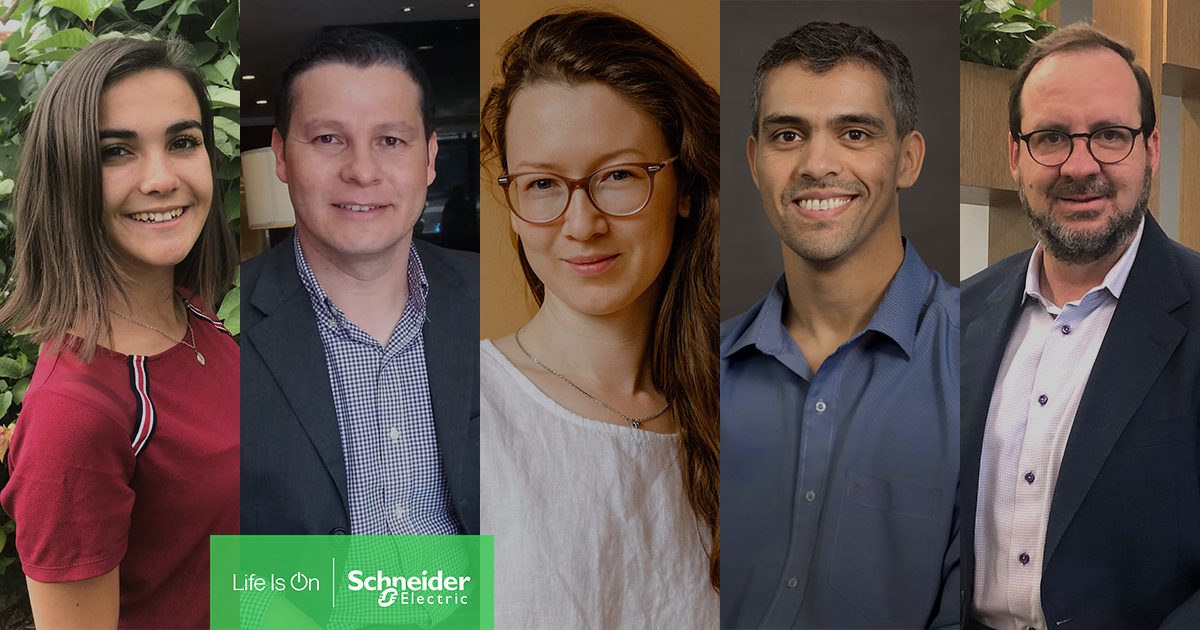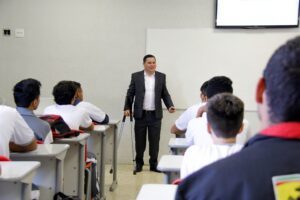December 3rd is the International Day of Persons with Disabilities. At Schneider Electric, we want our employees to feel welcomed and safe to be at their best, with our ambition to be the most diverse, inclusive, and equitable company, globally.
To build a diverse work environment, we need to act as allies and foster inclusion by better understanding of the key concepts and what people with disabilities need. Char James-Tanny shares her life and journey as an accessibility advocate and how we can all advocate and be better allies.
The Start of my Accessibility Advocacy Journey
 On Easter Sunday when I was 10, I broke four toes on my right foot while skateboarding. There wasn’t much they could do for broken toes. (Surprisingly, more than 50 years later, there still isn’t.) The doctor put an extra heel on my sneaker and, after the pain had eased, I was allowed to walk as long as I kept my toes pointing up.
On Easter Sunday when I was 10, I broke four toes on my right foot while skateboarding. There wasn’t much they could do for broken toes. (Surprisingly, more than 50 years later, there still isn’t.) The doctor put an extra heel on my sneaker and, after the pain had eased, I was allowed to walk as long as I kept my toes pointing up.
With my fancy sneaker, I wasn’t allowed to walk the mile to school. My parents planned for me to be picked up by the local transit bus that took kids to the New York State School for the Deaf. The bus trip was fine, but I couldn’t communicate with anyone, which was almost as painful as the broken toes.
The other kids taught me to finger-spell American Sign Language (ASL), and we could (somewhat) chat. (The ride was short and it took me a week to learn the alphabet, but we managed.) And that was my introduction to accessibility and advocacy, although I didn’t know it then.
Many years later, when I took time to think about it, I realized that my life has always included people with disabilities (PWD).
- Friends and family with dyslexia and dyscalculia.
- Friends and family with PTSD (at first, from WWII, but later, from other wars and events).
- Friends who are Deaf and taught me about their culture, along with more ASL.
- Friends who are blind and showed me their world (and turned the lights on when I visited). They also explained, very nicely, that no, they don’t feel people’s faces and prosthetic eyes aren’t round, no matter what TV shows say.
- Several friends who use wheelchairs, one because of osteogenesis imperfecta (brittle bone disease).
- Several friends with Cerebral Palsy, including one who can’t walk well and one who can’t speak well.
- Friends and family who are colorblind and need help identifying weather maps, colors on clothing websites, and more.
- And more, some that I met on Twitter and Facebook.
In 1999, the World Wide Web Consortium (W3C) released the first version of the Web Content Accessibility Guidelines (WCAG), providing guidelines for making content accessible. (Even though the name includes “web content”, the guidelines are applicable to all content.) I started creating accessible websites in 2000, using the original guidelines. Since then, WCAG has been updated, and the latest version is 2.1 in 2018. WCAG 2.2 is due to be released in 2021.
After joining Twitter in April 2008, I started noticing tweets about accessibility. And not just for websites, either; people were talking about documents (including PDFs), buildings, colors, language, and more.
And I learned a new hashtag: #a11y. A numeronym, “a11y” means “the letter a, followed by 11 letters, followed by the letter y”. (“a11y” should not be confused with “ally”.) Back when Twitter first started and we only had 140 characters for a tweet, shorter hashtags were preferred.
Now, many people use both #a11y and #accessibility in their tweets (and on Facebook, Instagram, and so on). You can get more information by searching for the hashtags or using your favorite search engine to look for “#a11y”. If you see one of the accessibility hashtags on any social media platform, clicking it will show you related tweets, posts, and more.
Before I started with Schneider Electric in January 2015, I worked as a consultant for my own company. Much of my work involved making content accessible, so I made improvements to Word, PowerPoint, and Excel documents, along with PDFs and websites.
Accessibility Journey at Schneider Electric
When I joined Schneider Electric, I realized that I had the opportunity to share my experience to help educate my colleagues, especially in some of our communications, because not all color combinations are accessible to all.
I started posting questions and comments on our community channels and joined those related to accessibility, including Diversity & Inclusion, User Experience, and more. In May 2019, Rick Blair (Multi Technologies, Distinguished Technical Expert) asked me if I’d be interested in working on an accessibility initiative for Schneider Electric.
Of course, I said, “Yes!” More people joined the initiative, and some of us were asked to help several groups, including:
- Learning Experience and Innovation to address some of our eLearning courses that weren’t accessible to screen reader users
- Digital Customer Experience (Aman) to increase the accessibility of different Schneider Electric websites
- Sticky Learning (Shashank and Rumia) to improve the accessibility of training materials
With COVID-19 restrictions, many of the ongoing projects slowed down, but I continue to be engaged with them and with new projects. Schneider Electric has started taking the necessary steps to raise awareness and engage our employees with disabilities and those who want to be allies.
This year, Schneider Electric is hosting its first global People with Disabilities awareness week to increase understanding and encourage employees to participate in this journey. We want to build a more inclusive environment for our employees with disabilities and increase the number of allies. I am so pleased to see this initiative moving forward because it means the entire company will truly embrace different.

Usability for All
As an accessibility advocate, I believe that accessibility means “usability for all”. The one thing I like to remember is that making something better for someone with a disability also makes it better for others. For example, curb cuts were introduced in the U.S. in the 1940s so that veterans in wheelchairs could get to VA offices. Now, everyone uses them.
The same concept is true for all aspects of accessibility.
- When colors and content have good contrast, people who are colorblind can see them, but it’s also easier for people who aren’t colorblind.
- When hashtags use initial caps for each word, screen readers identify each word (for example, #thisisahashtag as compared to #ThisIsAHashtag), and the accessible hashtag is easier for sighted people to read.
- When language is clear, people with cognitive issues or people who speak English as a second language understand more readily, and so does everyone else.
- When a building has ramps, people who use wheelchairs can enter. So can those who use a cane or walker, those who have mobility issues because of prosthetic limbs or arthritis, and those who are pushing or pulling something with wheels.
- When documents use styles, especially for headings, the documents can be read and organized by screen reader users and are easier for people with cognitive issues to understand.
- When videos have captions, people with hearing issues get the information. Captions also help those who can’t play sounds, such as those in a busy office, or in situations where sound can’t be heard, such as bars, airport lounges, and more.
“People with disabilities” is the largest minority group in the world and the one that everyone will join at some point, even if only temporarily. (Statistics show that on average, people spend 11% of their lives with some kind of disability, permanent or temporary.) By incorporating accessibility now, the person you might be helping is your future self.
#inclusive #a11y #accessibility
To learn more about how we support diversity and inclusion at Schneider Electric, check out our website here: www.se.com/diversity
To read Rick’s blog on his journey and disability awareness, click here.




Conversation
Thanks for sharing your experience, very nicely summarized.